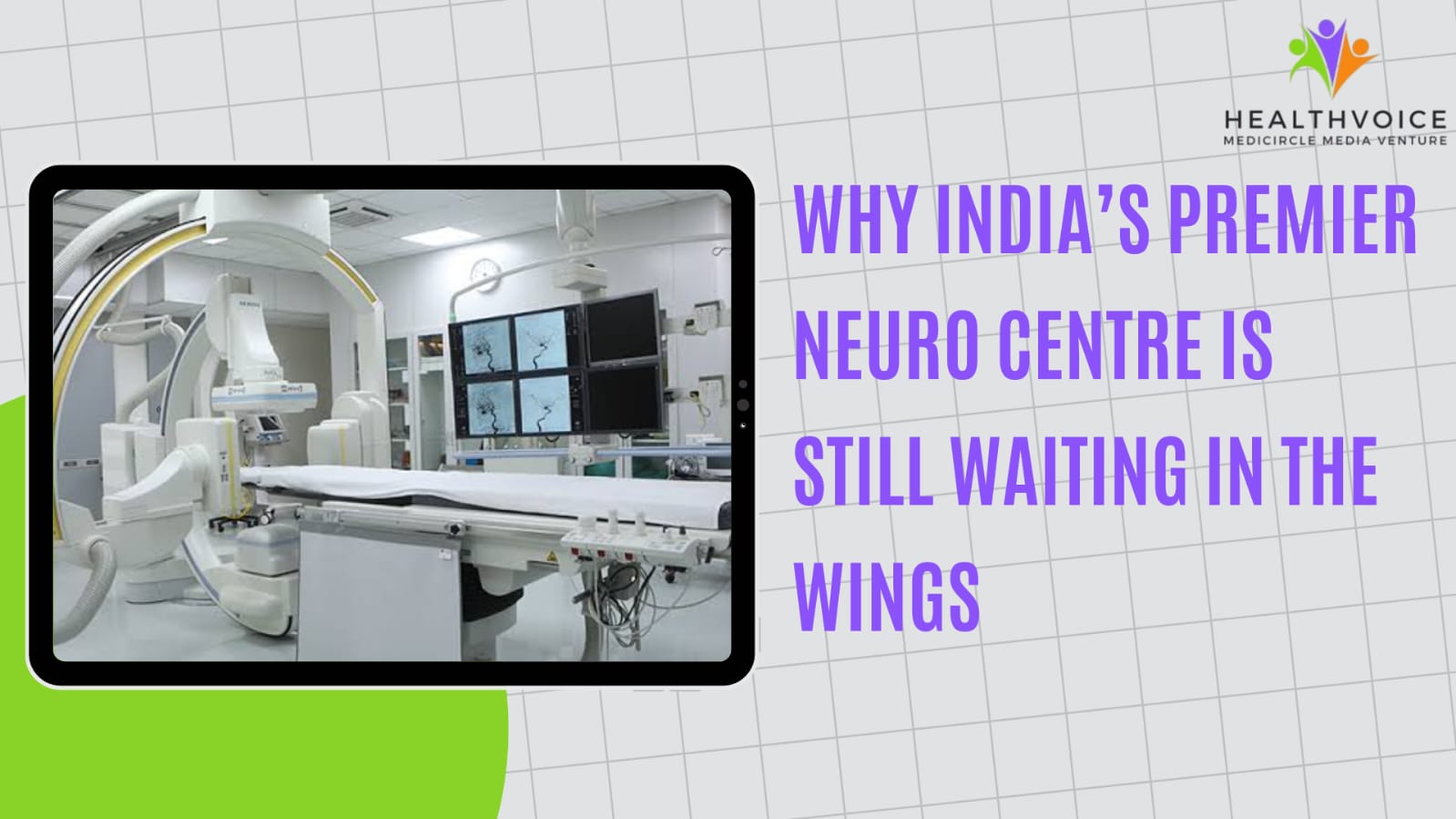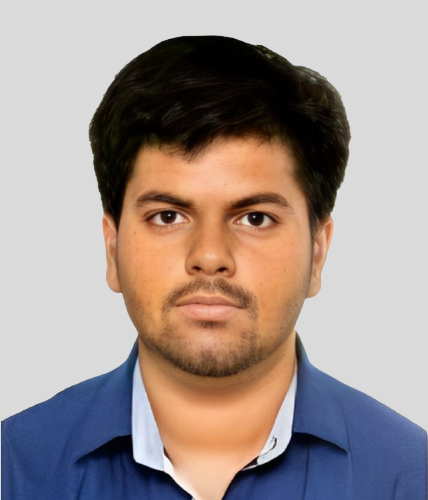Why India’s Premier Neuro Centre Is Still Waiting in the Wings
If neurology and neurosurgery services remain scattered, PGIMER may still produce specialists, but not deliver integrated care.

India’s neurological crisis isn’t hidden: we still have fewer than one neurologist per million people, and stroke and epilepsy remain leading causes of disability. For decades, patients from the entire ritically under‑served Punjab, Haryana, Himachal Pradesh, Uttarakhand, and so on, flock to Chandigarh’s PGIMER. The Institute was supposed to be building a response to that overload: a ₹490‑crore Advanced Neuroscience Centre (ANC) that would unite neurology and neurosurgery under one roof for the first time in the region. Construction is essentially over. Yet services are yet to begin, not because of clinical delays but idle clearances, missing equipment, parking nightmare, and even a lapsed grant. For doctors, hospital administrators, and policymakers, this twist of fate offers lessons on infrastructure, bureaucracy, and the fragility at the edge of expertise.
After nearly nine years since its approval (2017) and multiple pandemic‑related setbacks, the seven‑storey ANC complex at PGIMER now sits at 99% structural completion. The building sprawls over 47,600 m² and delivers 300 beds with ten modular OTs, a specialised brain suite, and a modern neuro ICU, all designed with GRIHA-green principles. With two basement levels combining parking for over 230 cars, the vision was to streamline patient care under one roof, and finally reduce the referral-driven overload that plagues PGIMER’s original trauma and emergency blocks.
On paper, this centre should have opened its doors by April–June 2025. PGI officials had planned phased activation, with OPDs shifting into the first wings by September and full inpatient services shortly after. The patients including those with complex cerebrovascular, skull base, and spinal issues were meant to finally receive care inside a purpose-built environment instead of makeshift wards. Upgrades to the trauma ward and emergency neurology drivetrain were also mapped into this shift.
Yet despite the near‑complete construction, services remain grounded. A High Court directive has finally forced the municipal corporation to install a water connection, a requirement that had held up fire safety clearances and building permissions for months. Without a water supply which is required for essential ICU services, sterilisation and plumbing the centre cannot be commissioned. Staffing and clinical setup are ready; but a basic civic utility stalled activation for months. As of June, the bench demanded water access within three working days but the delay had already squandered crucial time.
Alongside, the required radiological and surgical equipment, critical for operative neurology, has yet to arrive. At least one device (PET scan) alone was priced at ₹75 crore, and treasury officials pushed back. PGIMER had also let a ₹20‑crore Ministry grant lapse, blamed on internal delay and failure to procure machinery before the financial year closed. Loyola’s 2025 Standing Finance Committee lambasted the hospital for inefficiencies at a time when neurosurgical manpower sat idle awaiting functional theatres. Anticipated revenue of over ₹1 crore per month from diagnostics lay unused too.
Meanwhile, to meet rising patient demand, 14 new senior residents were sanctioned in the neurology department. Plans were made to start labs for autonomic function testing, gait analysis, rehabilitation services, TMS and neurogenetic facilities. Yet these skilled young doctors remain underutilised due to the facility’s operational delay.
The ripple effects extend to other PGI departments. The existing OPD‑complex was already overflowing so much so that shifts of 350 admitted patients routinely overflowed the 109‑bed emergency ward, and trauma admissions could not be expanded without space. Administrators had planned to shift neurological emergencies into the ANC and then use old wards for surgical expansion. The delay has frozen that entire master plan.
Then there’s parking. PGIMER currently accommodates 22,000 vehicles per day, but official capacity covers only 4,000. Most cars spill into neighbouring markets or waterlogged patches. With both the Neuroscience Centre and the Mother‑Childcare Centre functional, pressure on transport zones will spike. A new 4,000-slot lot near staff housing is still under construction. Without proper shuttle services or electric carts (unlike at AIIMS Delhi), internal mobility will pose a major barrier for patients even if wards open.
Medical infrastructure plans must anticipate not just construction delays, but head-to-toe functional dependencies from water to equipment to parking. It highlights gaps where civic oversight and health planning intersect; where a simple utility like water can become a bottleneck for expert care. The risk is that multipurpose patient care becomes fragmented before operations begin.
It also highlights the importance of financial discipline. A ₹20‑crore lapsed grant reflects budget overshoot or procurement delay, both of which erode public trust, especially when salaries for resident neurologists go unpaid or unused. In projects like these, funds must be carefully phased, procurement fast-tracked, and equipment not allowed to remain on brownfield lists.
PGIMER’s example demonstrates the criticality of integrated infrastructure planning. If any link in the chain breaks including equipment delay, clearance delay and staffing delay, the entire volume of neurological cases continues to ride in overcrowded wards. Chennai’s AIIMS or Bengaluru’s NIMHANS might bear the burden; but tertiary medical colleges without Multi‑Disciplinary Neuroscience Centres (MDNCs) will fall further behind.
A mindset shift is needed, from “training in a building” to “training in an ecosystem.” If neurology and neurosurgery services remain scattered, PGIMER may still produce specialists, but not deliver integrated care. Veneto and genomic labs, once the routine order of business, remain on pause until activation.
Clinical leadership must also confront the implications for patient flow. Right now, cerebrovascular or spinal injury patients are treated across departments; the Brain Suite is ready, but uncommissioned. Once functional, cases will funnel to a single integrated central facility easing referral fatigue for patients and creating economies of scale for neurosurgical practice. But Operating theatres remain dark, even while average trauma bed occupancy runs beyond capacity.
From a policy lens, PGI's Neuroscience Centre should be a flagship of India’s neurological revolution, an answer to the shortage of neuro-critical care beds, to denial of advanced neurosurgical access, and to state inequity in tertiary care. When the building lingers idle, India's narrative of super-specialty capability in public hospitals becomes hollow. It raises important questions: how many similar centres across India remain stunted by missing permissions or funds? What is the status of other centrally funded hospitals awaiting activation?
Moreover, the delay creates an unintended opportunity for decentralization: satellite PGI campuses at Sangrur, Una, Ferozepur and the new MBBS college at Sarangpur could absorb staff, operations and patient volume if the central campus stalls indefinitely. The Sarangpur facility, if opened by 2028‑29, may relieve pressure but only if well coordinated. That metric of integration across PGIMER’s network matters as much as each brick in Chandigarh.
The neurology shortage of trauma patients stacking up, families travelling from Himachal, disorders undiagnosed due to inadequate imaging, all these community care gaps need context. PGIMER’s facility design had plotted to meet not state but national demand. That promise still exists. But national neurology policy, which India launched earlier this year, must pivot to include facility readiness beyond raw land.
If the Neuroscience Centre remains unused into late 2025, PGI risks leadership credibility not of academic prowess, but of execution risk. Doctors, policymakers, and public health advocates must raise this as a system failure: patients can’t wait for digital imaging when brick buildings are held hostage to red tape.
Yet while reservations persist, there remains hope. 300 beds combined with 30 private units, 10 state-of-the-art OTs, HDU, NICU-linked protocols, rehabilitation clinics and Brain Suite operations will eventually introduce a new benchmark for neurology care in India. Once equipment arrives, once water flows, PGI resumes its mission. Staff hired (senior residents, technologists, lab personnel) will then be activated properly, and ancillary services can be fully launched.
Ultimately, PGIMER’s Advanced Neuroscience Centre represents a national possibility, a step toward making high-end neurological care accessible, affordable, and integrated. But that possibility hinges on the center switching from idle structure to operating facility. For doctors, the call is urgent: engage with PGI administrators, track infrastructure readiness, and keep patient care plans waiting for what should open any month now.
When that day arrives, it must feel more than symbolic. It must feel like justice for decades of neurology patients waiting in long queues, like the impact of medicine and architecture merging correctly, not fictionally. Until then, PGIMER’s centre is less neuroscience beacon and more mirror: it reflects what India builds, and also what it loses, when planning stops at cement.
 Sunny Parayan
Sunny Parayan
#NeuroCare #NeurologyForAll #Neurology #StrokeCare #NeuroCareCrisis #HealthcareWithDignity #HealthJustice #healthvoice
